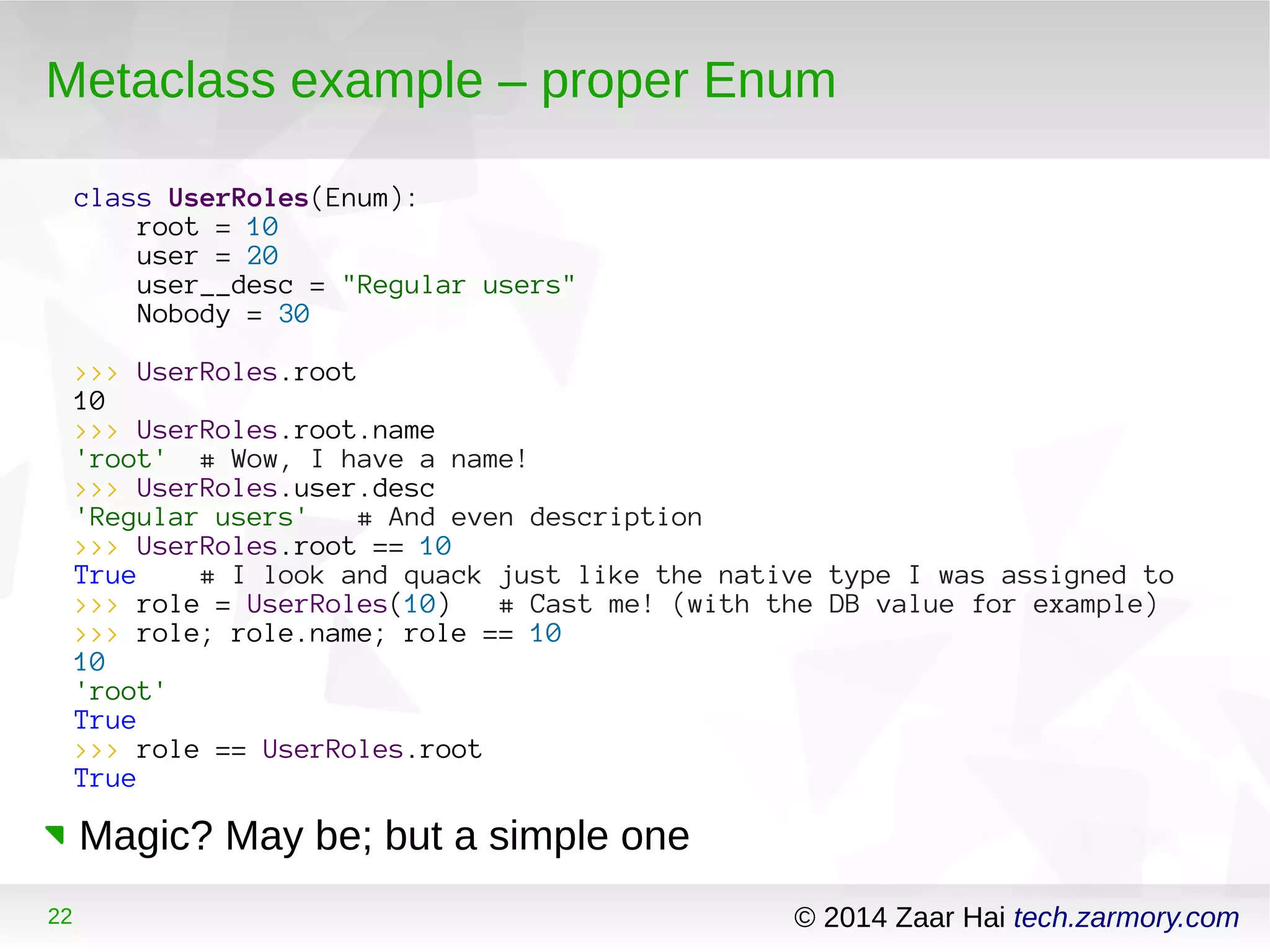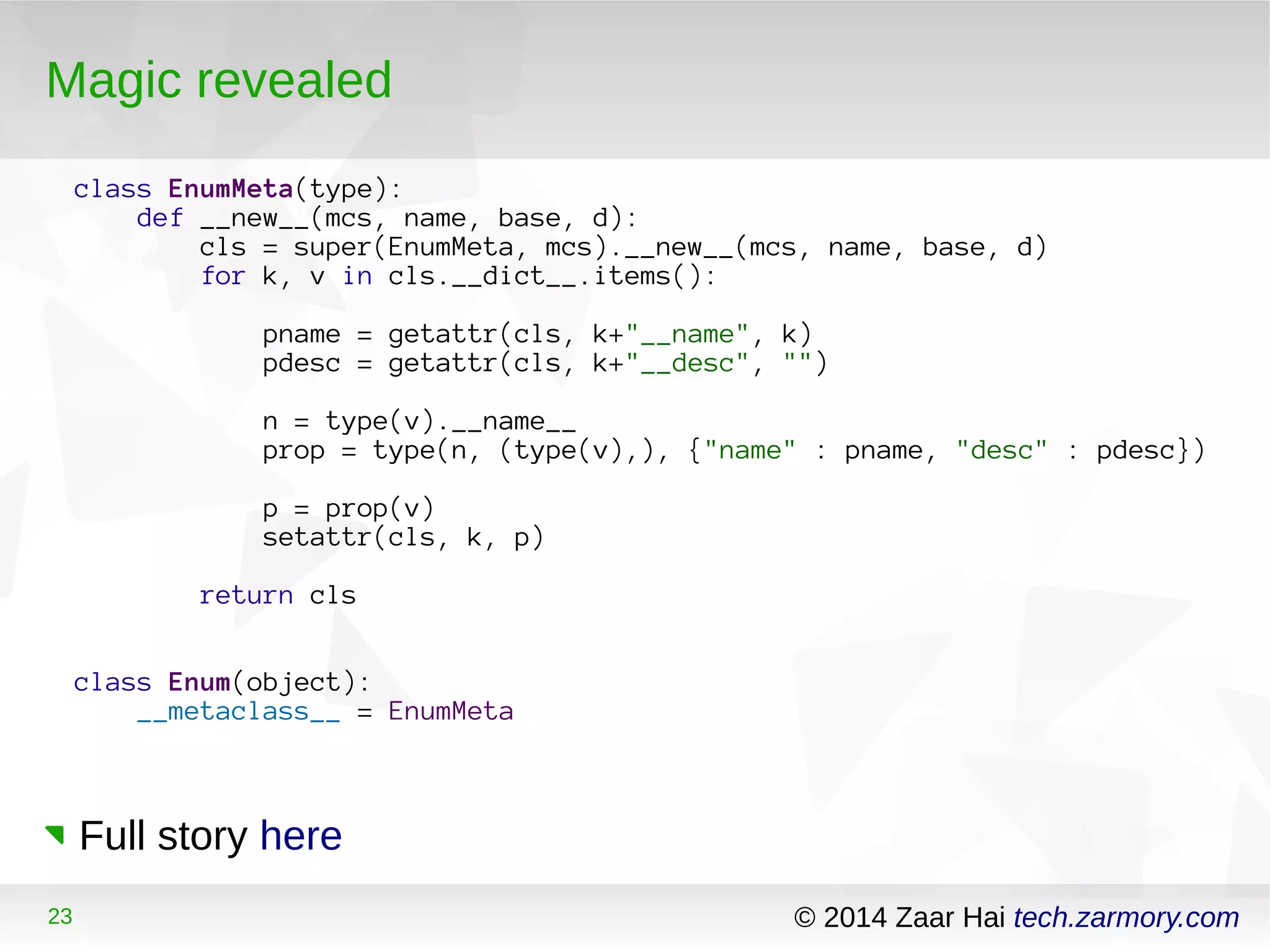The document discusses advanced Python topics such as decorators, descriptors, and multiple inheritance. It explains the use of decorators for enhancing function behavior, caching values, and includes examples of class-based decorators and property decorators. Additionally, it covers method resolution order (MRO) in multiple inheritance and introduces metaclasses, showcasing how they can be utilized to create flexible class definitions.

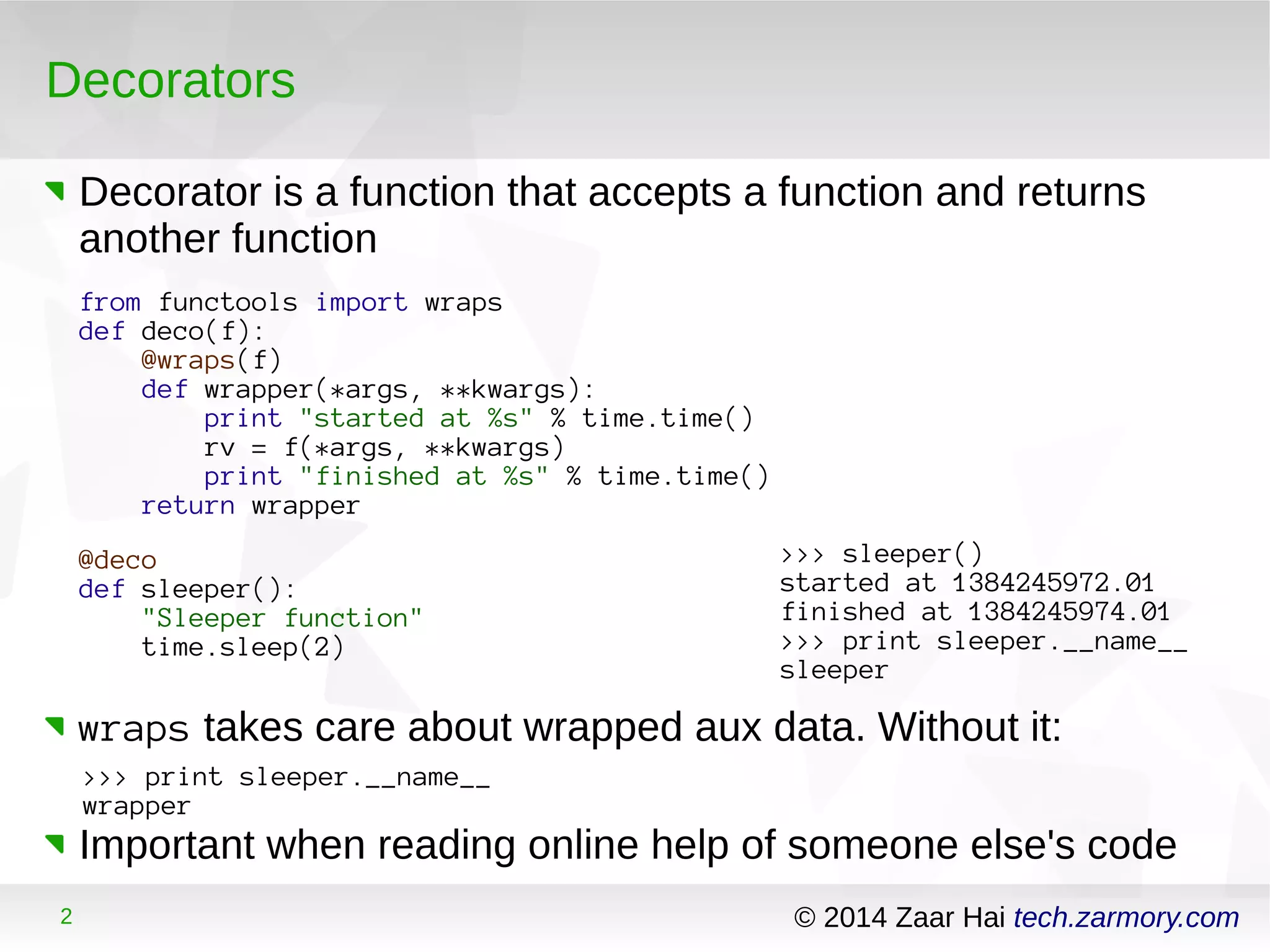
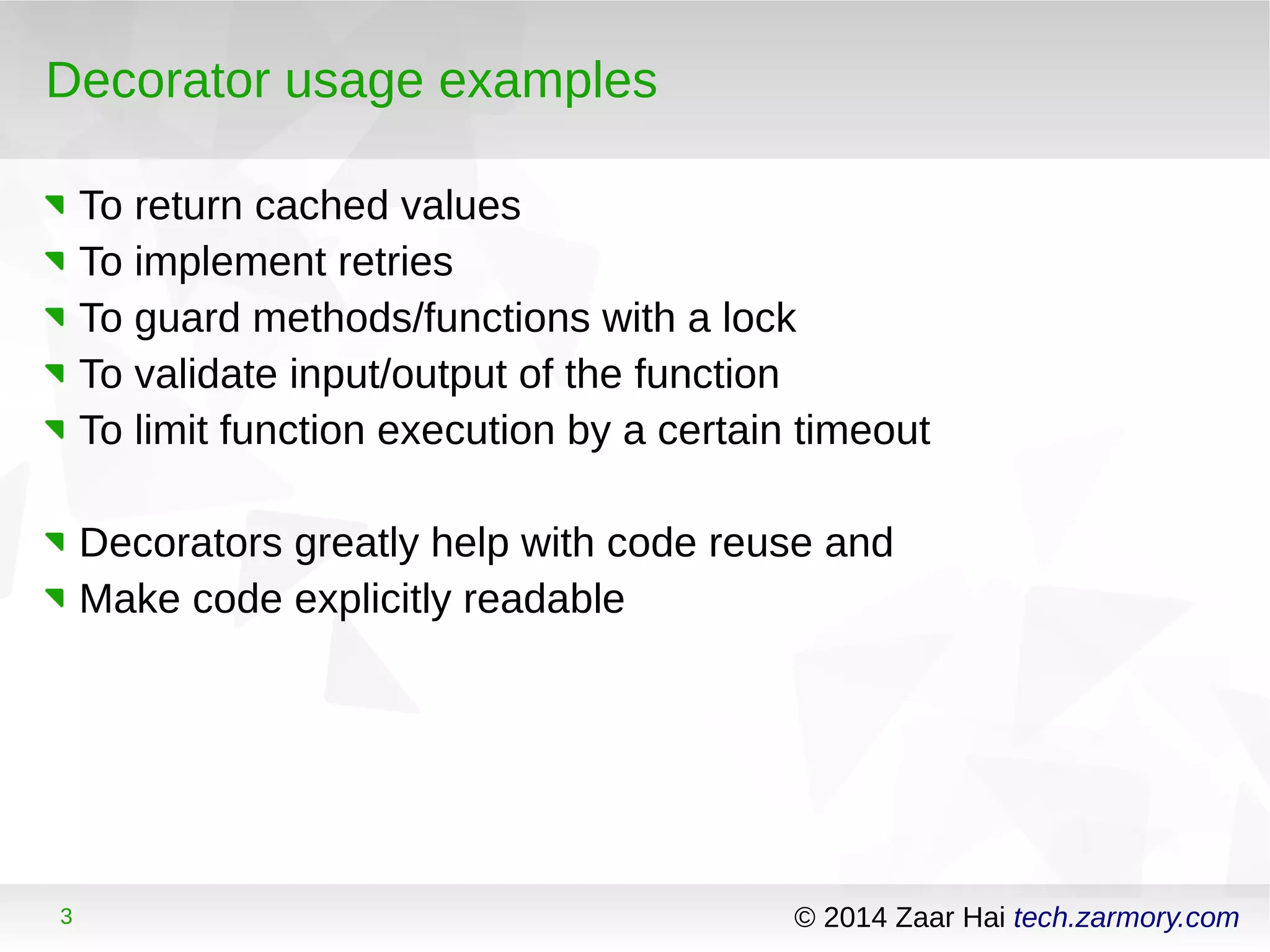
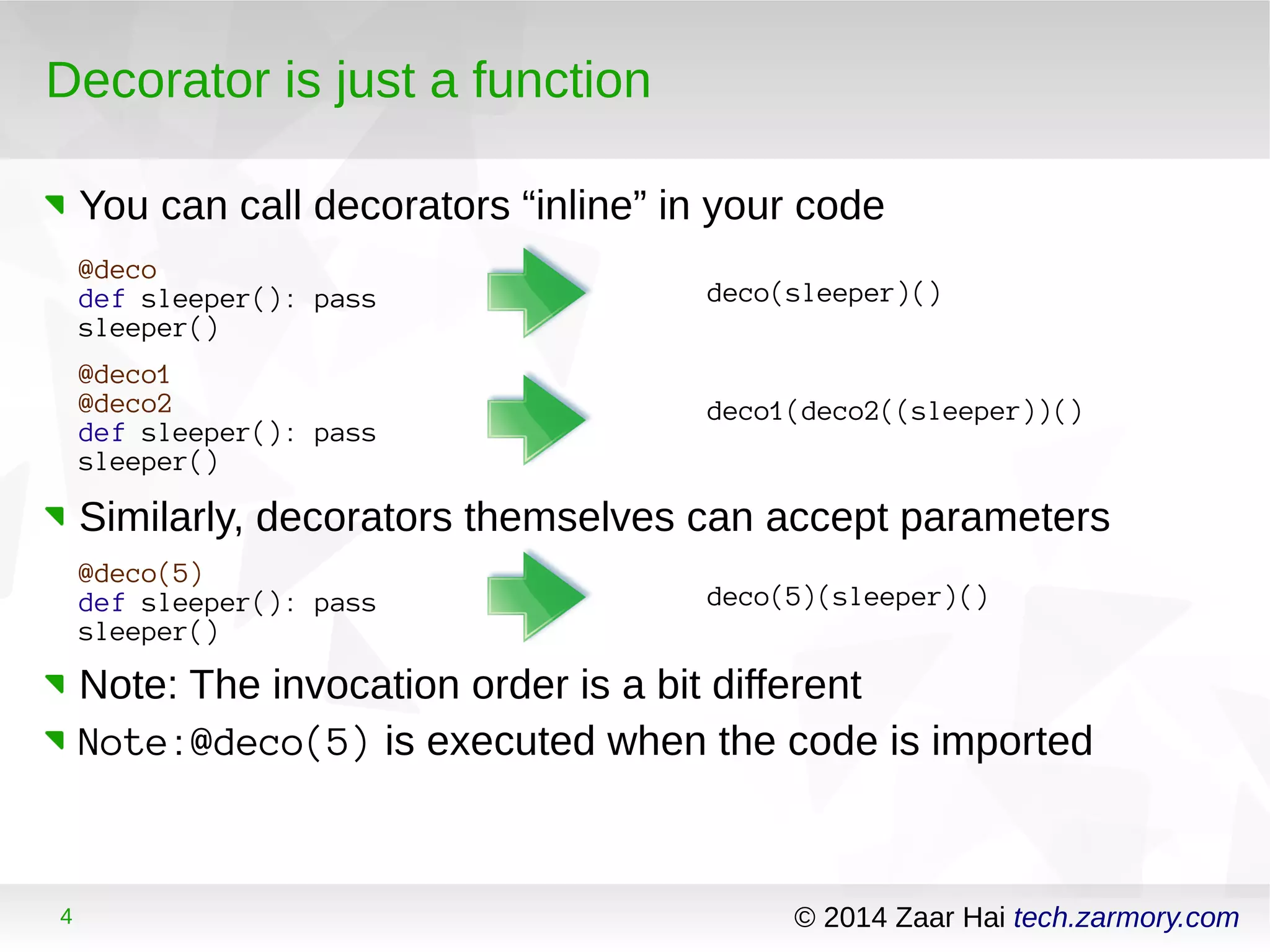
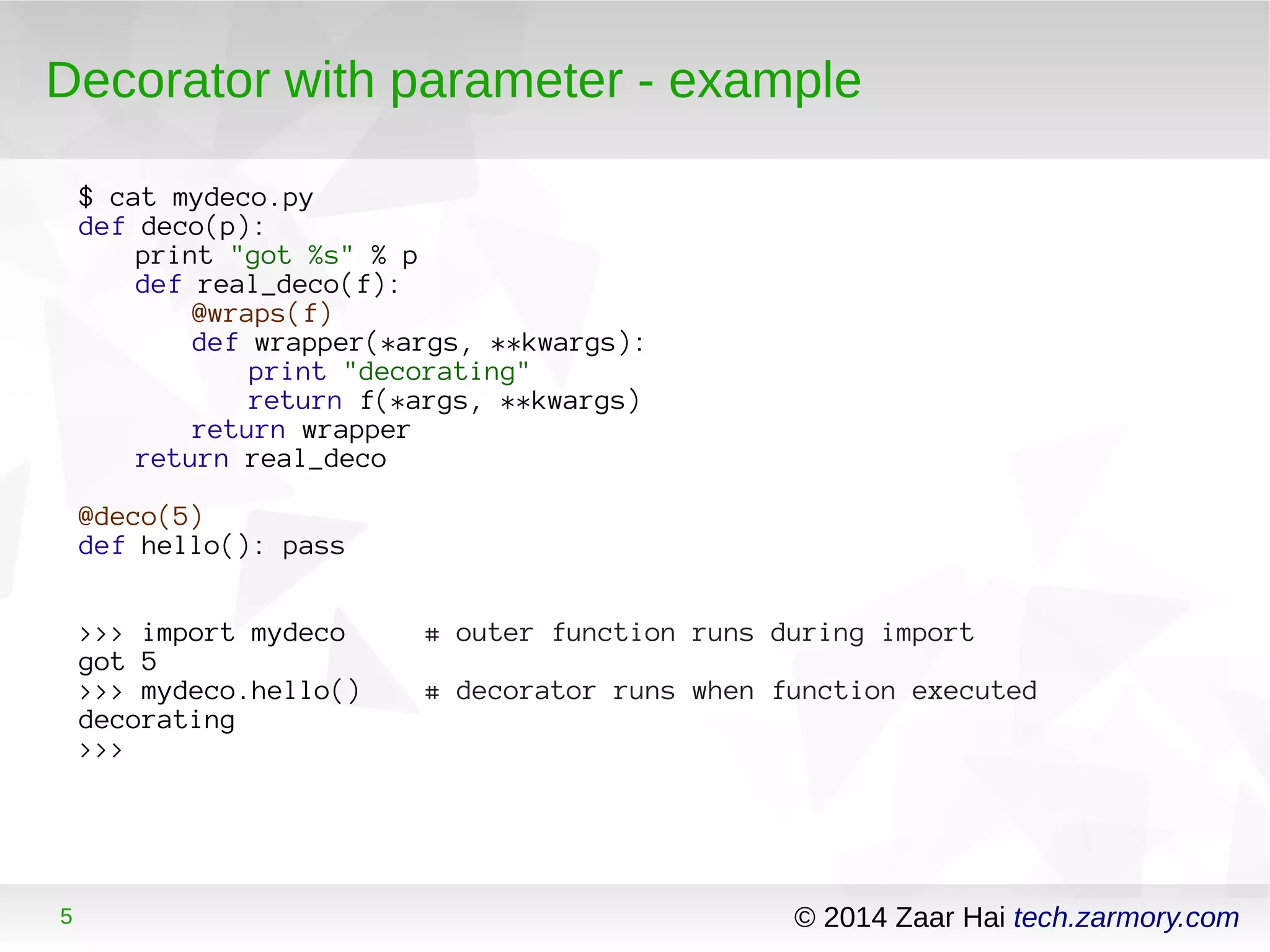
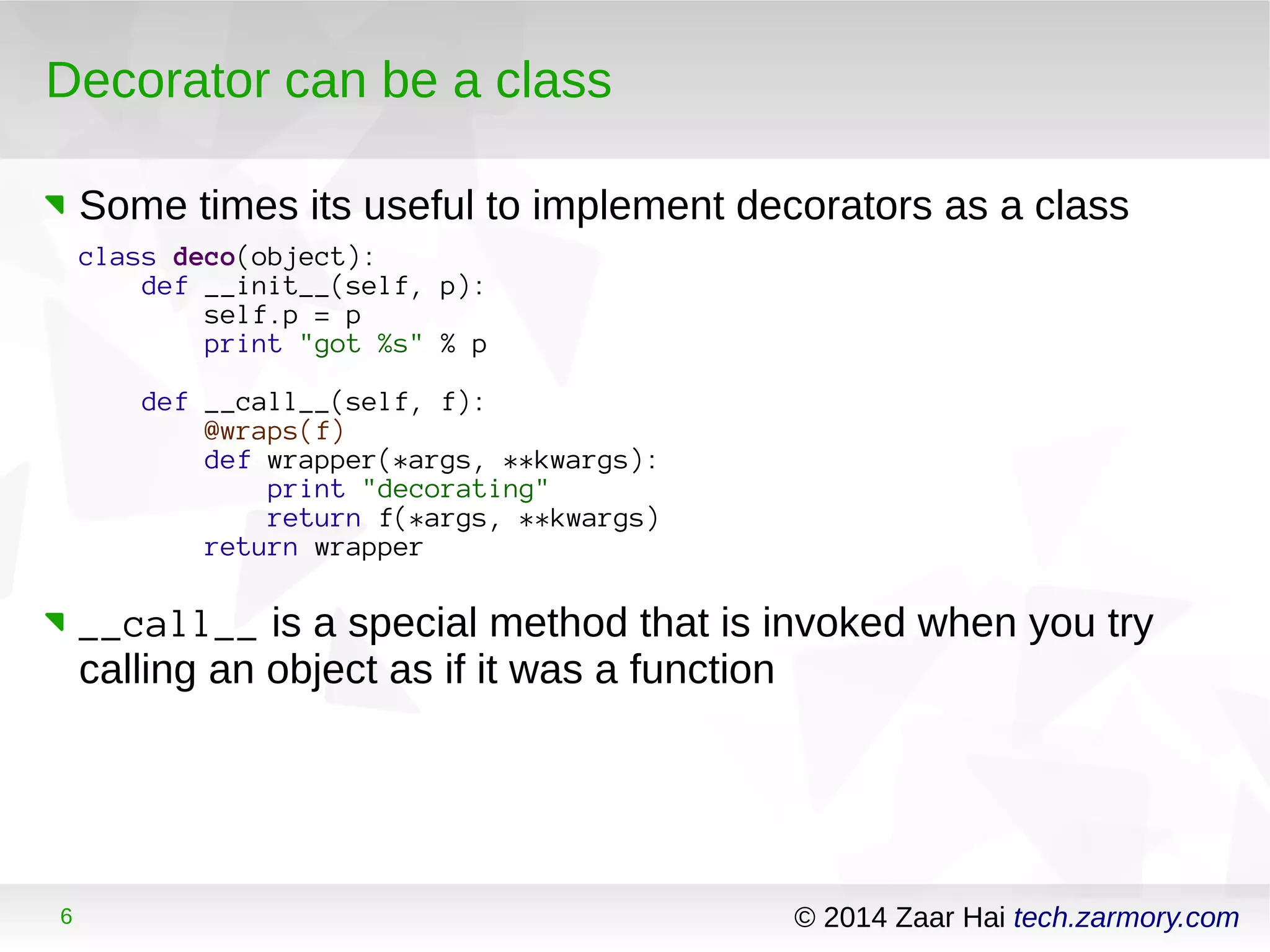
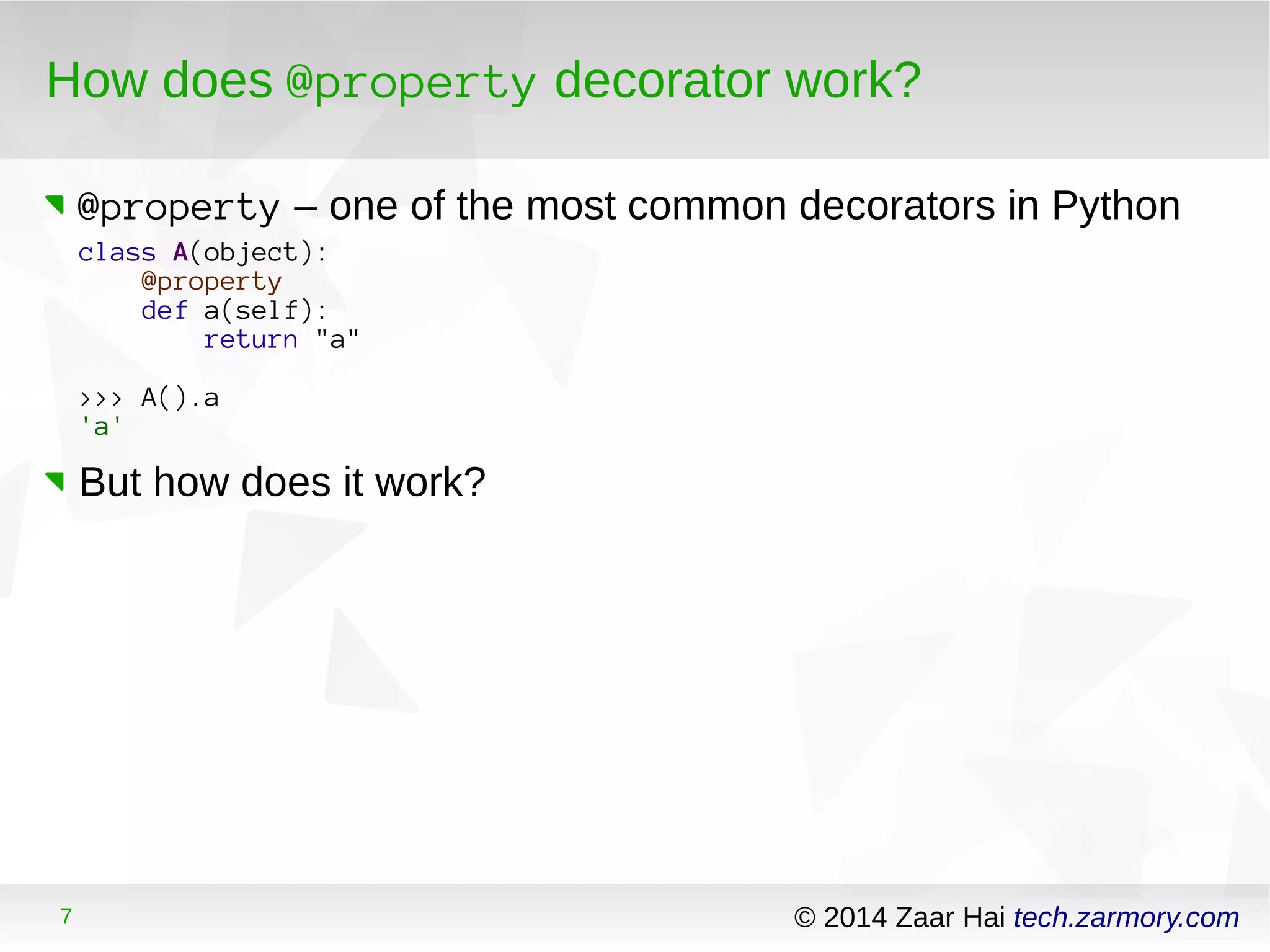
![Meet descriptors
Descriptor is a protocol for accessing object attributes
class A(object):
def __init__(self):
self.a = 1
>>> f = A(); f.a
When you access a, what actually happens is
v = self.__dict__["a"]
if hasattr(v, '__get__'):
return v.__get__(self)
else:
return v
I.e. when attribute defines __get__ (or __set__) methods,
they are called to produce (or set) actual attribute value
8 © 2014 Zaar Hai tech.zarmory.com](https://image.slidesharecdn.com/pythonlecture-141214122731-conversion-gate01/75/Advanced-Python-Part-1-8-2048.jpg)
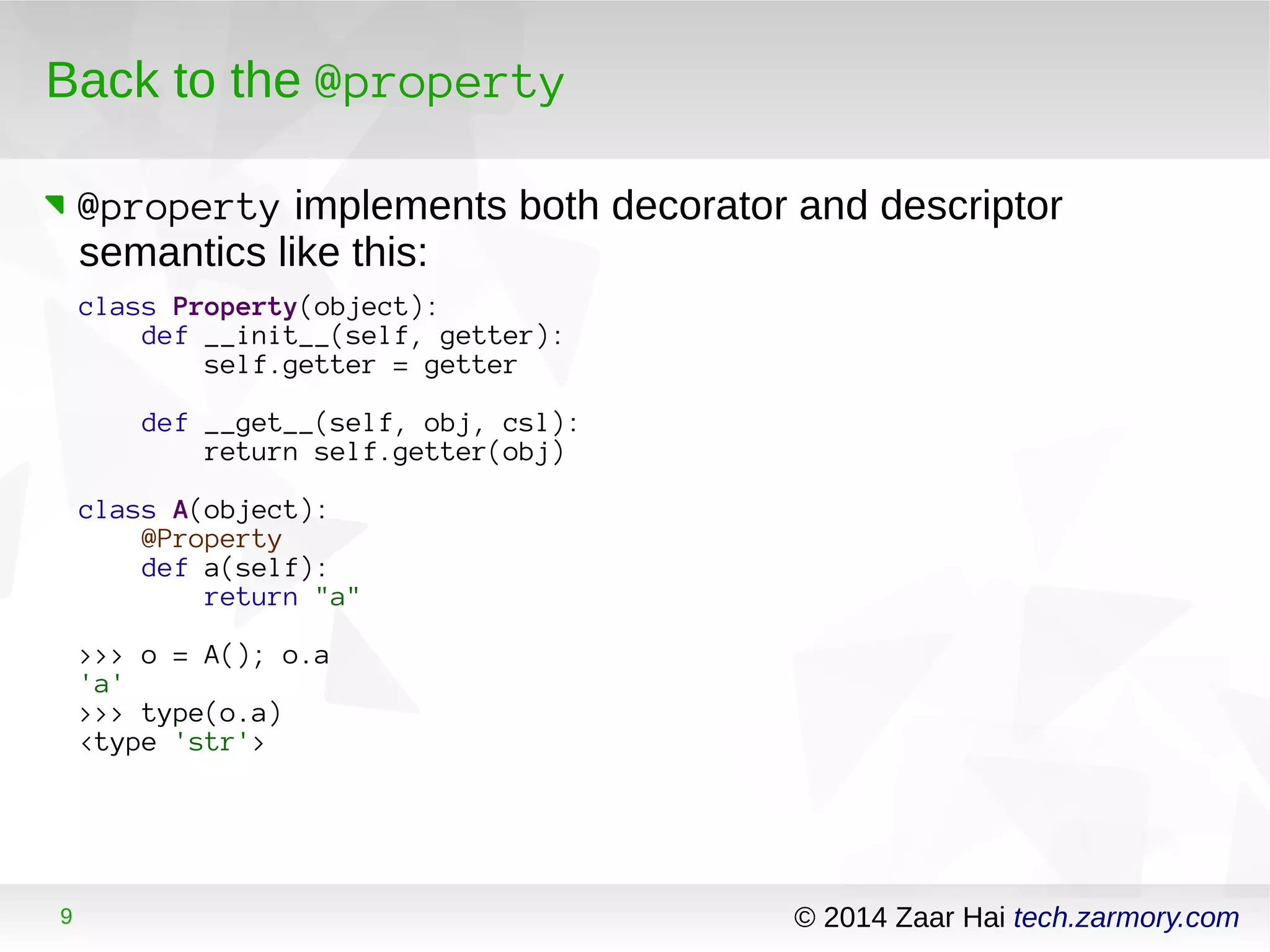
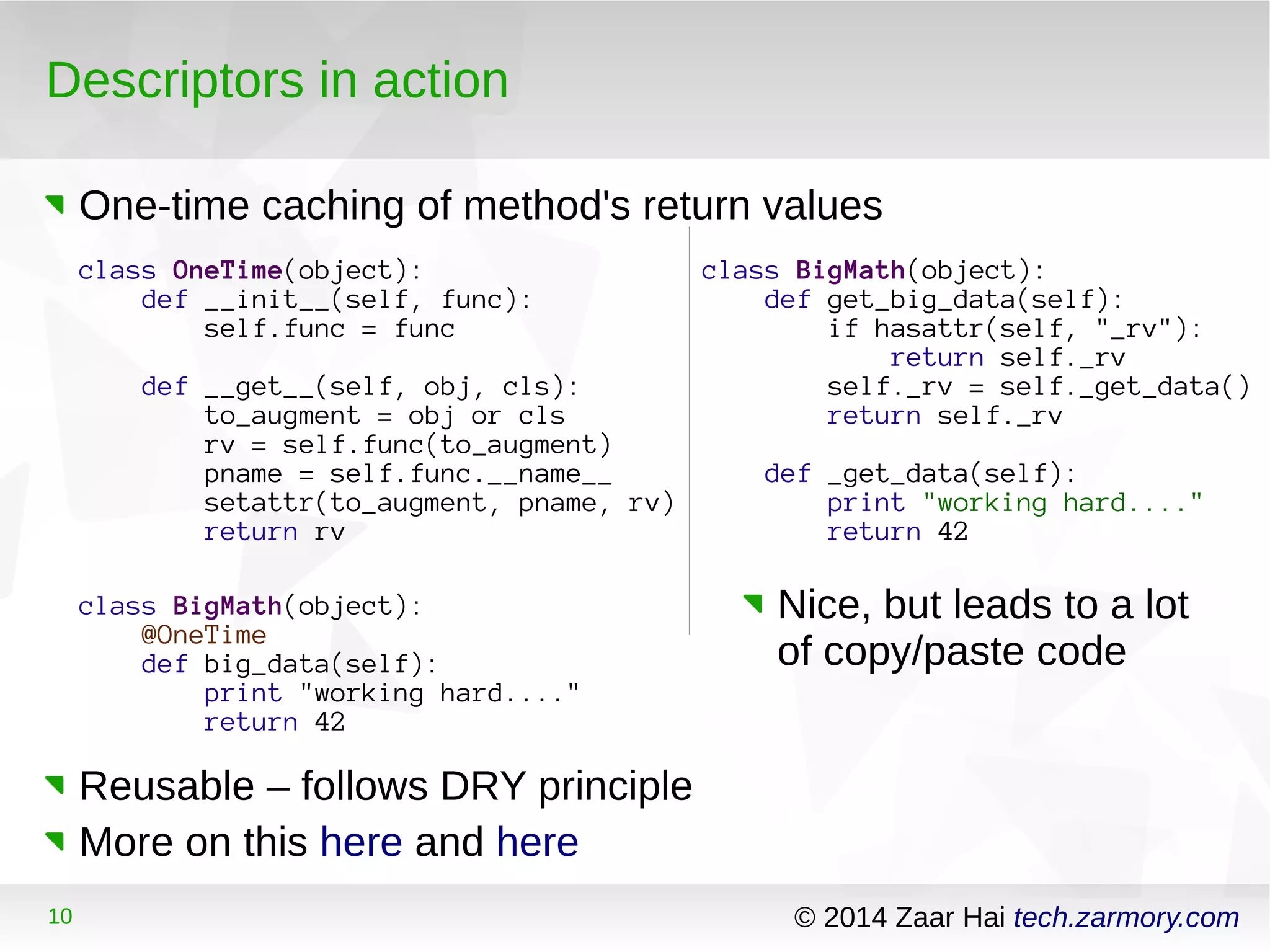


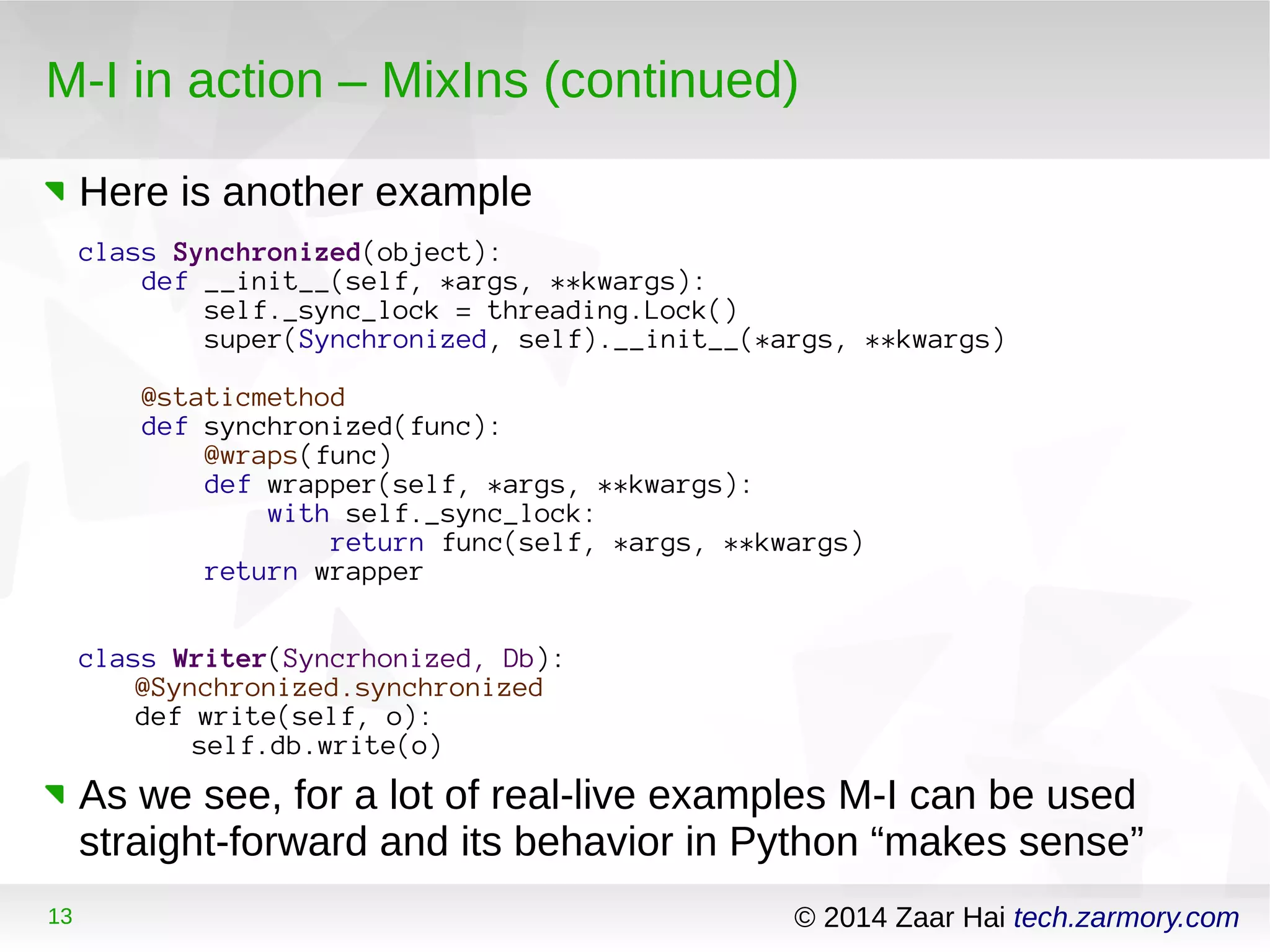
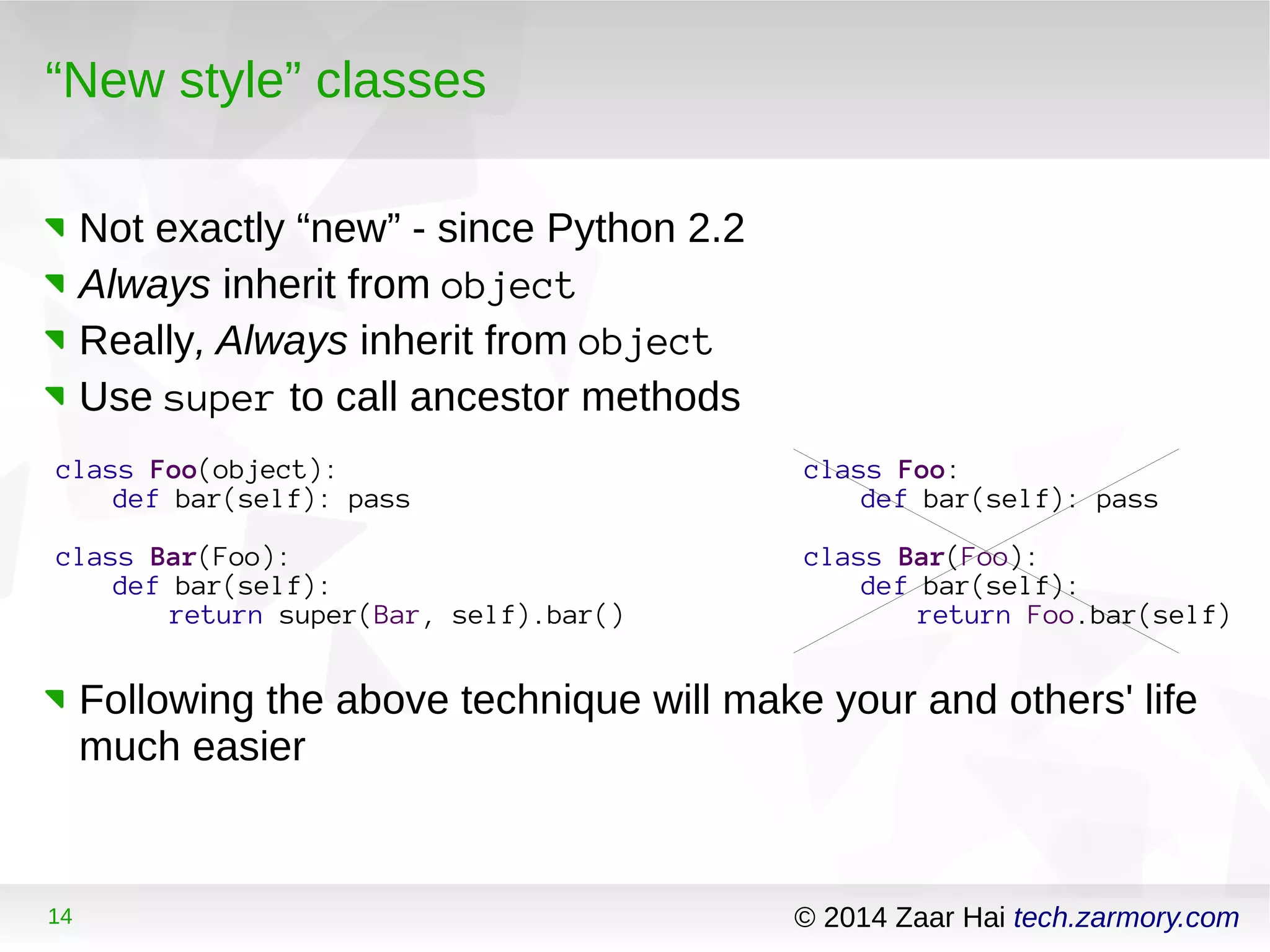
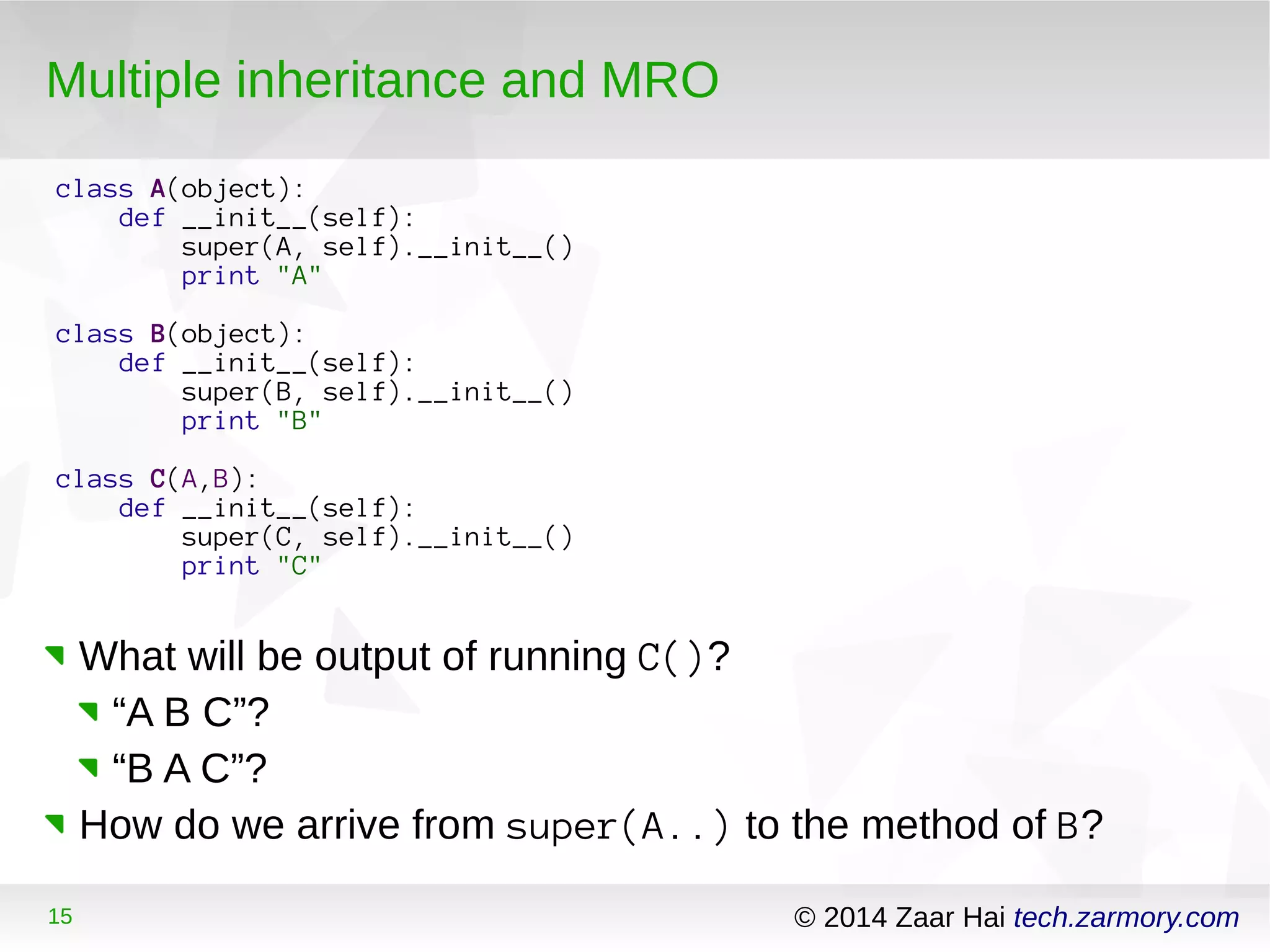
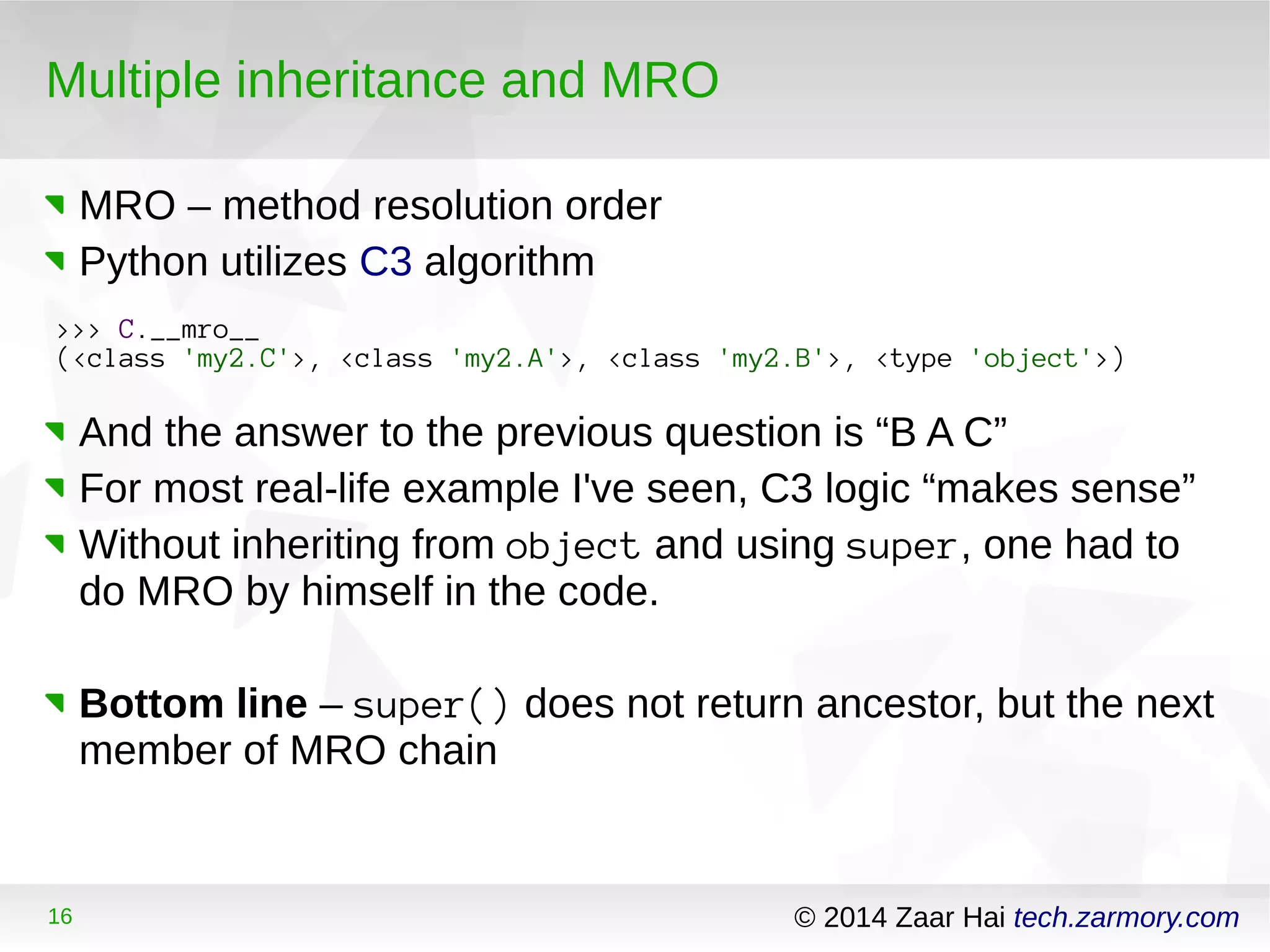
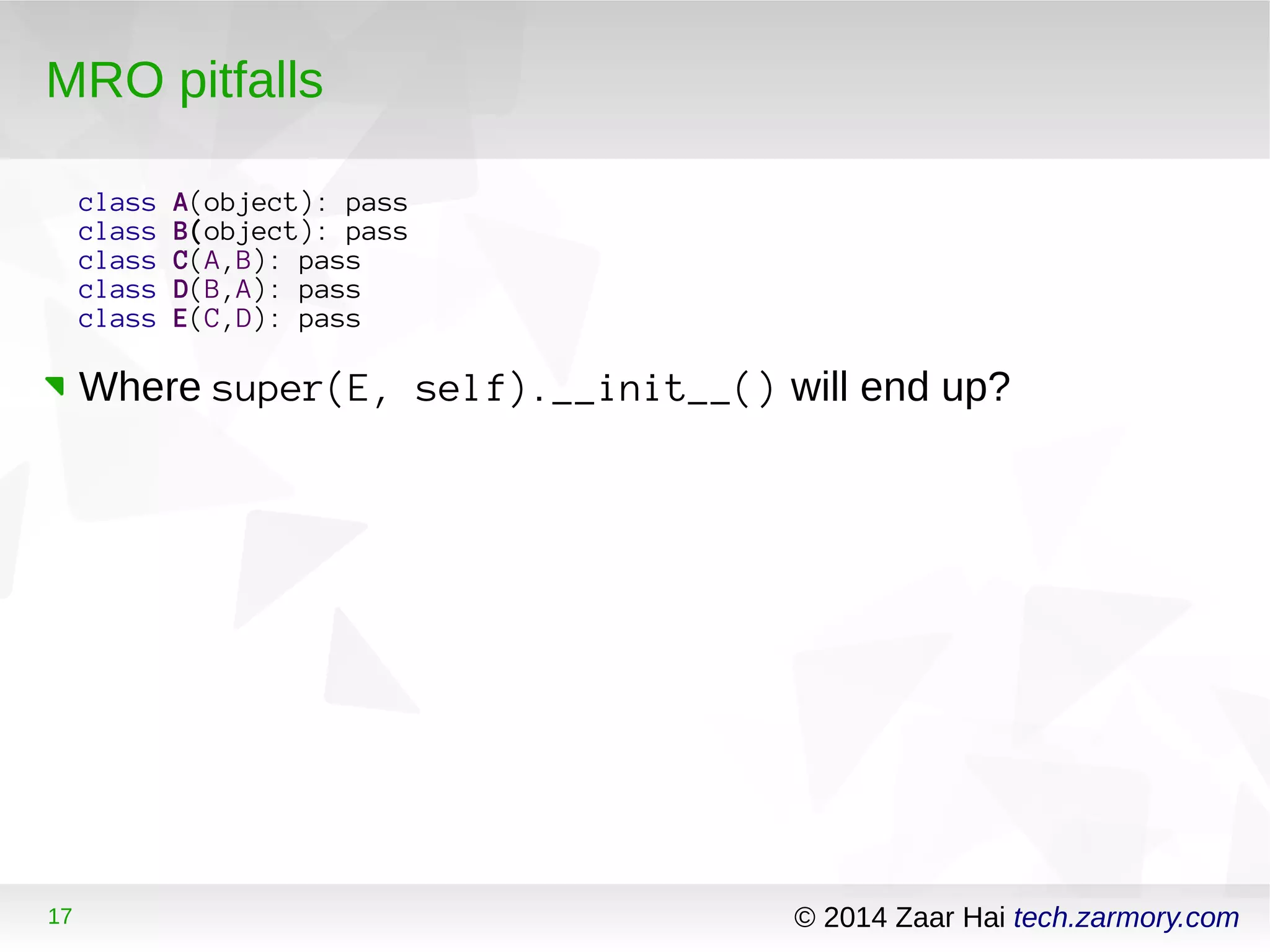
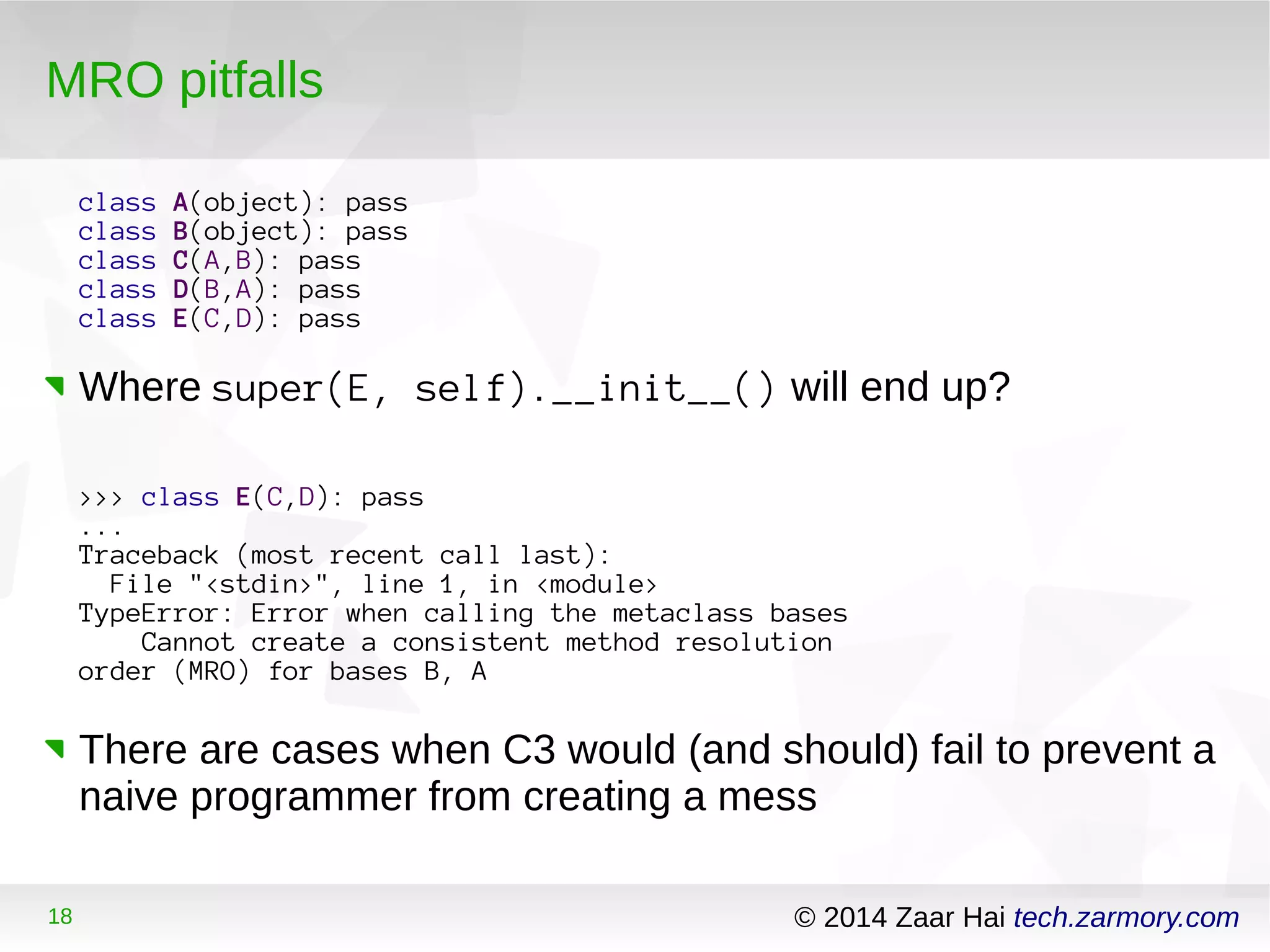
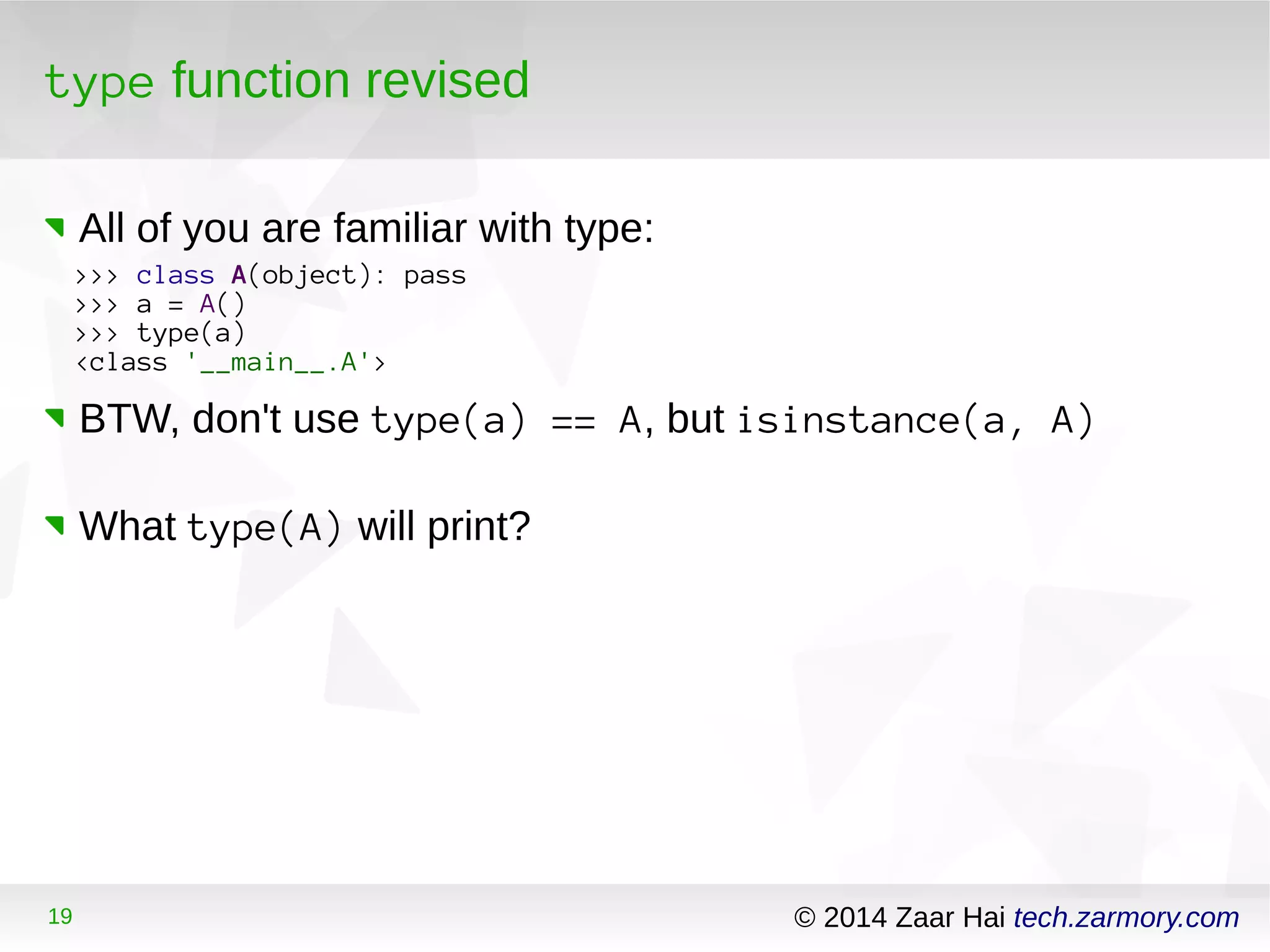
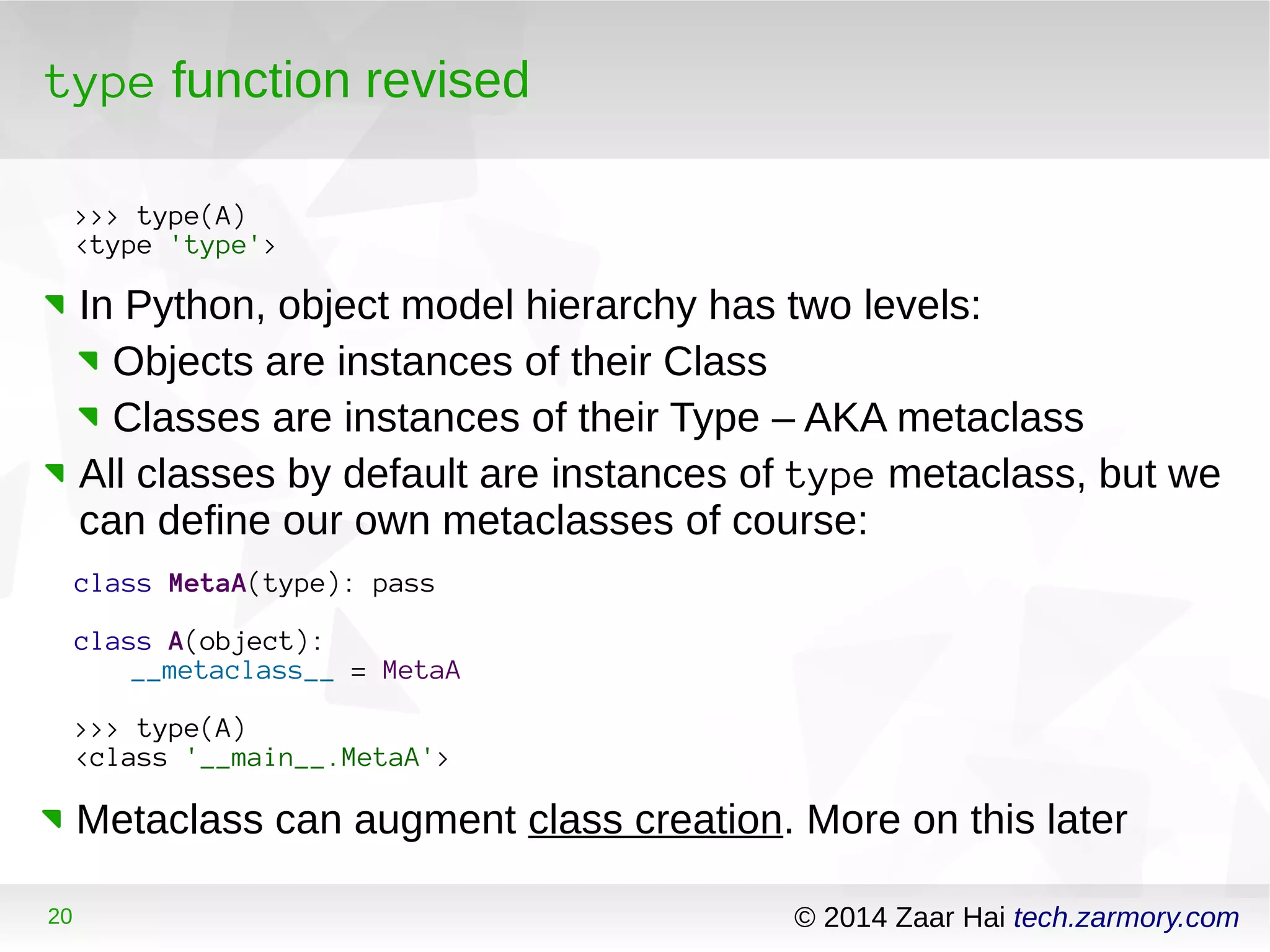
![Yet another face of type function
type can be used to create new classes on the fly
The syntax: type(name, bases, dict)
class Actor(object):
def get(self, req):
return self.val
for c in [Volumes, Hosts]:
class Conf(object): pass
class Volumes(Conf):
url = '/volumes'
val = 5
class Hosts(Conf):
url = '/hosts'
val = 4
HandlerClass = type('Handler', (Actor, c), {})
HttpServer.addUrl(c.url, HandlerClass)
HttpServer.start()
Allows really decoupled design. Yet flexible and efficient.
21 © 2014 Zaar Hai tech.zarmory.com](https://image.slidesharecdn.com/pythonlecture-141214122731-conversion-gate01/75/Advanced-Python-Part-1-21-2048.jpg)
